If you want to improve how you get things done and be more successful, The ONE Thing by Gary Keller is a great book to read. Gary Keller, who founded the largest real estate company in the world, shares advice that has helped many people focus better and get more done by doing less.
At the heart of the book is a simple yet powerful question: “What’s the most important thing you can do that will solve most of your other problems or make them go away?” This question helps you figure out the one thing you should focus on, so you don’t get distracted by less important tasks. By focusing more on just one thing, you can actually achieve bigger results.
In the following summary, we’ll explore the key takeaways from this bestselling book. Whether you’re looking to improve your productivity, grow your business, or find balance in life, The ONE Thing offers practical advice to help you simplify your path to success.
Another book you’ll like is Atomic Habits by James Clear. Once you’ve chosen the right “one thing” to focus on, you need a plan to achieve it. In Atomic Habits, Clear suggests focusing on systems rather than just goals. As he says, “Goals are about the results you want to achieve. Systems are about the processes that lead to those results.”
For example, if someone wants to become a professional writer, it’s more effective to focus on the daily process of writing and getting 1% better every day. When we fixate too much on our big goal, that often leads to feeling overwhelmed and then procrastination.
🎯 1. Focus on One Thing: Success comes from narrowing your focus to the most important task, the one thing that can simplify or eliminate the need to do most other things.
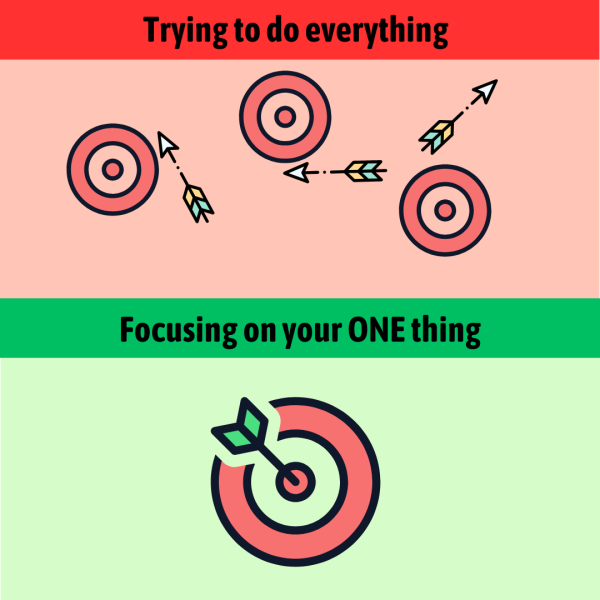
Chapter 1 Summary
This chapter is about how focusing on one key task can lead to massive success in both your personal and professional life.
- Learning to focus on one thing: The author Gary Keller, co-founder of Keller Williams Realty, shares how his real estate company reached regional success but began to struggle. After hiring a coach, he was told to focus on building a team of 14 key people. By making this his single focus, even stepping down as CEO, his company experienced 40% annual growth for the next decade, showing him the power of narrowing his attention to one priority.
- Teaching others to narrow their focus: While coaching the top leaders in his company, he initially had them narrow their priorities to just a few tasks. Over time, he refined this approach, eventually asking them to identify the “one thing” that would have the biggest impact. This simple but powerful question led to extraordinary results for them, too.
- Key insight: Success comes from doing fewer things with laser focus, rather than spreading yourself thin with a busy schedule filled with distractions.
Chapter 2 Summary
This chapter explains how small actions can lead to a chain reaction of big results, which is called the domino effect.
- The domino effect of small actions: The author explains how people set up long chains of dominoes, with a world record of over 4 million dominoes in a row. A cool fact from physics is that a small domino can knock over another one that’s 50% bigger. In one experiment, a 2-inch domino knocked over another one that was 50% bigger, and then the next one was also 50% bigger… so that the 8th domino was 3 feet tall and dropped with a loud bang! And if the chain kept going, the 30th domino would be as tall as Mount Everest! This shows how success works: starting with small actions can lead to huge results if you focus on the right thing.
- Your “one thing” is the first domino: Just like the first small domino can set off a chain reaction, your “one thing” is the most important task that gets everything moving. By focusing on that one key action, you create momentum that leads to much bigger achievements over time. Success grows step by step, just like knocking down dominoes, one at a time.
Chapter 3 Summary
This chapter highlights the power of focusing on one thing and how some of the most successful people achieved great results by doing so.
- Focusing on one thing leads to massive success: This chapter shows how individuals and companies achieve amazing results by focusing on just one thing—whether it’s a product, skill, or idea. For example, Apple’s main product is the iPhone, KFC became famous for its fried chicken recipe, and Google built its success on being the best at one thing: search engines.
- The story of Bill Gates: Bill Gates is a great example of the power of focus. He dedicated himself completely to one skill—computer programming—and that focus led to the creation of Microsoft, which succeeded because of one product: Windows. Later, when Gates turned to philanthropy, his wife asked where they could make the biggest difference. Gates focused on one thing again: vaccines for developing countries, knowing this could save the most lives. Both he and Warren Buffett said on stage that the key to their success came down to one word: focus.
Another book with a similar idea is Essentialism by Greg McKeown. The subtitle of that book is “the disciplined pursuit of less,” and it’s all about doing fewer things but doing them better. Business author Jim Collins found that many great companies failed because of “the undisciplined pursuit of more”—adding more products, markets, or departments, which made them lose focus and become less competitive.
So “essentialism” is doing the opposite of that. For example, when Steve Jobs returned to Apple, he cut 90% of their products to focus on the most important 10%. In our own lives, if we don’t cut out what’s not essential, we’ll end up with a life filled with priorities set by other people, not ourselves.
🚫 2. Learn to Say No: To say yes to your one thing, you have to say no to distractions and less important tasks. Focus is about prioritizing what truly matters.

The next six chapters of The ONE Thing dive deep into six common productivity myths—ideas that are repeated so often they start to feel true, but actually hold us back from achieving real success.
Chapter 4 Summary
This chapter shows that not everything is equally important, and true success comes from focusing on the most impactful task.
- The myth of a productive to-do list: The chapter reveals the false belief that getting more done leads to more success. Long to-do lists might feel productive, but most of the tasks on them aren’t important. What you really need is a success list—a short list focused on the few things that drive extraordinary results. Only a handful of tasks are truly critical to success, and focusing on those can make all the difference.
- The 80/20 Principle taken to the extreme: Inspired by economist Vilfredo Pareto, the 80/20 Principle shows that a small percentage of inputs lead to the majority of outcomes. For example, in most companies, around 20% of customers generate 80% of the profits. The author explains that you need to push this concept even further—narrowing your focus to just one thing.
- Narrowing down to the one key action: In his company, they initially brainstormed 100 ways to gain industry recognition, then narrowed it down to 10 ideas, and finally focused on one key action: writing The Millionaire Real Estate Agent. That book, written over the course of a year, sold one million copies in a market of about one million people, and had a massive impact on their success.
Chapter 5 Summary
This chapter reveals the myth of multitasking and how switching between tasks lowers productivity and focus.
- The myth of multitasking: People often think that multitasking makes them more productive, but that’s not true. Research by Stanford professor Clifford Nass found that people who try to multitask actually perform worse at everything. The idea of multitasking came from computer processors, which don’t truly multitask but rapidly switch between tasks, but people can’t switch as easily or effectively.
- The hidden cost of switching focus: Research shows on average, people are interrupted every 11 minutes during the workday—by things like email or coworkers—and it can take up to a third of the day just to get back on track. That’s because when you switch between tasks, it takes time to refocus. This lost time adds up throughout the day. Especially when we’re working on complex tasks, which take longer to switch into.
- Giving your work the respect it deserves: While you can do two simple things at once, like walking and talking, you can’t focus on two complex tasks at the same time. Think of how surgeons or pilots are expected to be 100% undistracted while they’re working because their jobs are critical. Shouldn’t your most important work deserve the same undivided attention and respect?
The best productivity book I’ve read on staying focused is Deep Work by Cal Newport. In the first part of the book, he argues that the most important skill for the future is doing deep, focused work, instead of shallow, half-distracted work. He says, “To learn hard things quickly, you must focus intensely without distraction.”
He shares four strategies to help you focus, from most intense to most flexible. The first is “monk mode,” where you become almost unreachable, like writer Neil Stephenson who doesn’t even have a public email. The second strategy is to set aside long periods for deep work, like Carl Jung, who would retreat to a countryside house for a few months to think deeply, then return to the city to see his clients, the work that paid the bills. The third option is to block out time daily for deep work, like The ONE Thing suggests with four hours at the start of your workday. The final option is to fit in deep work whenever you can, which Cal Newport does by writing during his kids’ nap times.
🔋 3. Manage Your Willpower and Energy: Willpower is limited, so do your most important work early in the day when you have the most energy and focus.

Chapter 6 Summary
This chapter explains that success isn’t about having constant discipline but about building one habit at a time.
- The myth of needing super discipline: Many people believe that success requires being highly disciplined all the time, but that’s a myth. You don’t need to be super disciplined forever—you just need enough discipline to create a habit. Once a behavior becomes a habit, it takes much less effort to maintain. Research from University College London shows it takes about 66 days on average for a new habit to form and become automatic.
- Build one new habit at a time: To be successful, focus on building one habit at a time until it sticks. An example is Michael Phelps, who as a child was told he lacked focus because of ADHD. However, he focused on one thing—swimming—and built daily habits around it. By practicing every day, even on Sundays, Phelps eventually became the most decorated Olympian in history, with 22 medals.
Chapter 7 Summary
This chapter talks about how willpower is a limited resource and why it’s important to focus on your most important task early in the day.
- The myth of on-demand willpower: Many people think they can rely on willpower whenever they need it, but that’s a myth. Willpower is limited—it depletes throughout the day, just like a phone battery running low. That’s why after a long, exhausting day, we often give in to temptations, like grabbing an unhealthy snack even if we promised ourselves to eat healthier. In one study, judges are far less likely to grant parole as the day wears on.
- Do your most important thing early in the day: Since willpower is strongest in the morning, it’s crucial to tackle your most important task—the “one thing”—early in the day. To keep your brain fuelled, eat foods high in complex carbohydrates and protein to provide a steady stream of glucose, which helps mental performance.
Eat That Frog by Brian Tracy is a classic book on getting your most important work done first. Basically, your frog is the hardest, most important task you need to tackle—the one you’re most likely to procrastinate on but that will have the biggest impact.
As Brian Tracy says, “The ability to concentrate single-mindedly on your most important task, to do it well and to finish it completely, is the key to great success, achievement, respect, status, and happiness in life.”
⚖️ 4. Balance Isn’t Always Necessary: At times, you need to go out of balance professionally to focus on your one thing, but in your personal life come back quickly to priorities like health and relationships.
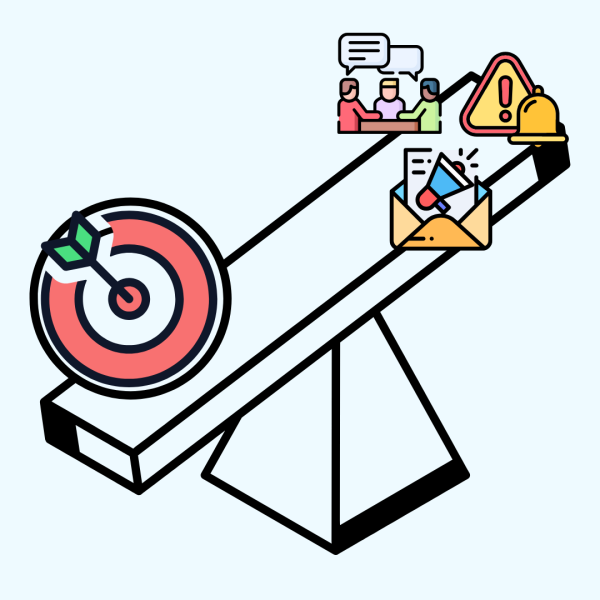
Chapter 8 Summary
This chapter explains why work-life balance is a myth and how getting out of balance for short periods is sometimes necessary for success.
- The myth of work-life balance: The idea of work-life balance became popular in the 90s, but the author argues that it’s unrealistic. Instead of striving for perfect balance, we should aim for a meaningful life. To make a significant impact in any area, whether personal or professional, you will need to focus intensely on certain tasks, which means getting out of balance at times.
- Go out of balance, but never for too long: While it’s necessary to go out of balance to achieve big results, the key is to counterbalance. In your professional life, you can afford to be out of balance for longer periods to focus on important work. However, in your personal life—relationships and health—you should only go out of balance briefly and quickly tend to neglected areas, as these can’t be assumed to last if ignored for too long.
Chapter 9 Summary
This chapter challenges the idea that thinking big is overwhelming and shows how big results come from big thinking, not just working harder.
- The myth that thinking big is bad: Many people believe that thinking big will lead to stress and overwhelm, but that’s not necessarily true. In fact, big thinking helps us break free from limiting beliefs and artificial ceilings on what we can achieve. This connects to Carol Dweck’s Growth Mindset, which emphasizes that we can always improve and grow, rather than being stuck with our current abilities.
- Big results require big thinking, not always working harder: Achieving bigger results doesn’t mean you have to work harder; it often requires smarter, more focused actions. Aiming higher can sometimes be easier than expected, and thinking small can often lead to just as much effort for fewer results. Big thinking guides you to take different actions, like how JK Rowling planned all seven Harry Potter books before she wrote the first one.
The next three chapters focus on how to ask the key question at the heart of The ONE Thing and how this simple practice leads to powerful answers and habits—that become the foundation for achieving extraordinary results.
💡 5. Ask the Focusing Question: Regularly ask yourself, “What’s the most important thing I can do, that will solve most of my other problems or make them go away?”

Chapter 10 Summary
This chapter introduces the focusing question that helps you identify the one most important task that will make an overwhelming impact towards whatever your goal is.
- The ONE question: The key to success starts with asking yourself, “What’s the most important thing I can do, that will solve most of my other problems or make them go away?” This question helps you focus on the the one critical task that can make many other tasks easy or irrelevant. It works for both big, long-term goals and the small, immediate tasks you face each day.
- For example, if you’re running a business and struggling with low sales, the most important thing might be developing a standout offer. By focusing on one critical task, you could make other issues—like marketing challenges or customer retention—easier or irrelevant because an outstanding offer will naturally attract more customers and drive sales.
- Put your eggs in one basket: The chapter shares a story about Andrew Carnegie, head of Carnegie Steel and the second richest person in history. He once said that the secret to business success is to focus all your energy and resources on one thing—become the best at it, know it inside and out, and don’t spread yourself too thin. People often say, “Don’t put all your eggs in one basket,” but Carnegie believed we should, “Put your eggs in one basket, then watch the basket.” This means concentrating on one project and giving it your full attention.
Chapter 11 Summary
This chapter emphasizes the importance of turning the focusing question into a habit for success in every area of life.
- Turn the one question into a habit: Making a habit of asking “What’s the one thing I can do?” is key to success. You can apply it to different areas of your life and adjust it for specific goals and timeframes. For example, ask yourself, “What’s the one thing I can do today to improve my health?” or “What’s the one thing I can do this week to strengthen my relationships?”
🚀 6. Aim Big, But Think Specific: Don’t be afraid to set big goals, but be specific about what you need to do to achieve them. Big thinking leads to big results.
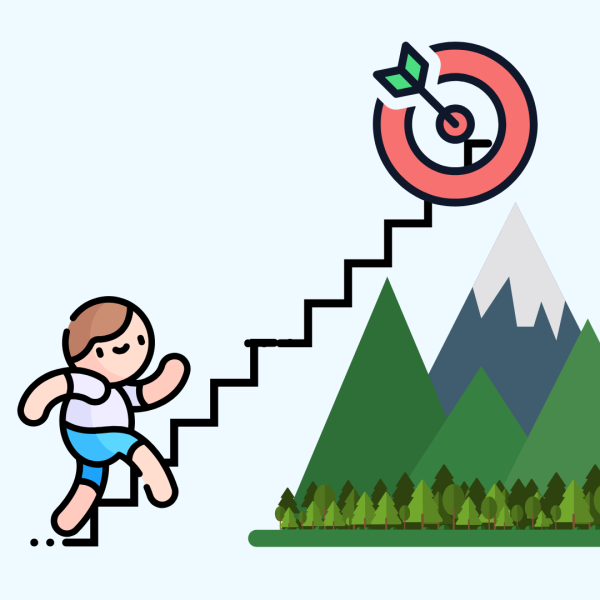
Chapter 12 Summary
This chapter explains how asking big, specific questions leads to better answers and greater success.
- Ask big and specific questions: To achieve extraordinary results, you need to start by asking the right question—one that is both big and specific. For example, instead of asking something vague like “How can we improve customer satisfaction?” or something small like “How can we increase satisfaction by 5%?”, ask a big, focused question like, “How can we double our customer satisfaction ratings in the next 6 months?” This type of question drives clearer, more powerful actions toward achieving your goals.
- Analyze success, then go beyond: After asking the right question, the next step is to analyze the success of others. Begin by studying what the best people have done to achieve similar results, and then push beyond that by thinking creatively. Look for ways to take things to the next level or do something completely different to outperform and set new standards.
The last chapters of The ONE Thing focus on big ideas like purpose and mastery. These are the invisible inner foundation of outer success and productivity—kind of like how 70% of an iceberg is hidden underwater.
Chapter 13 Summary
This chapter focuses on how aiming for meaning and engagement brings happiness and purpose to your life.
- To find happiness, aim for meaning and engagement: A lot of people say they want happiness, but they aren’t sure what that really means. Research by Martin Seligman shows that real happiness comes from finding meaning and being fully involved in something, not just from making more money. When you focus on something bigger than yourself, happiness follows. It also helps you push through tough times that are part of achieving any big goal. Ask yourself what’s the one thing you can do that would mean the most to you and others?”
- The story of Scrooge: The chapter uses Scrooge as an example of how changing your purpose can change your life. Scrooge went from just saving money and using people to using his money to help others. For Gary Keller, his purpose is teaching others how to live their best lives, which brings him happiness and keeps him motivated.
Chapter 14 Summary
This chapter teaches how breaking down big goals into daily actions is the key to staying focused on your top priority.
- Turning future goals into today’s actions: People often choose short-term rewards over larger long-term rewards, like $100 today instead of $200 in a year, due to a psychological bias called hyperbolic discounting. To beat this, start by writing down a long-term goal, like 5 years out, then break it down into what you need to do in 1 year, 1 month, this week, today, and right now to achieve that goal. This step-by-step approach helps you stay on track toward your big “someday” goal. Research shows that writing down your goals makes you 42% more likely to achieve them (according to a study from Dominican University of California).
⏳ 7. Time Blocking for Productivity: Use time blocking to dedicate uninterrupted time to your most important work. Set aside at least 4 hours a day to focus on your one thing.
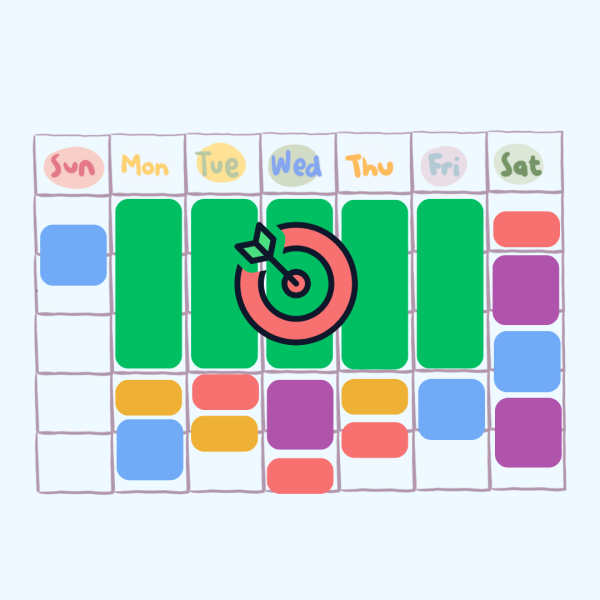
Chapter 15 Summary
This chapter is about using time blocking to focus on your most important work and reduce distractions.
- Time block your most important work: Time blocking means setting aside at least 4 hours in the first part of your day to focus on your most important task. Whether you’re a coder, writer, or doing any other job, this is the time to do your “one thing.” Once you finish that, you can handle other tasks like organizing or managing. Successful people don’t always work more hours—they just get the right things done first in the time they work.
- Dealing with distractions: Distractions are the biggest threat to getting things done. Right now, people are probably accustomed to being able to interrupt you at any time or get a quick response. Treat your time block like an appointment you can’t miss. After a week or two, people will get used to not being able to reach you right away. Use things like a “do not disturb” sign or put your phone away to stay focused.
- Time off is crucial: Before anything else, time block your time off on your schedule. Many successful people plan their work around vacations because they know rest is key to staying productive and doing your best work.
Chapter 16 Summary
This chapter outlines three key principles—mastery, challenging yourself, and accountability—that are essential for long-term success.
- Keep working toward mastery: Mastery doesn’t come from talent alone—it comes from putting in the hours of deliberate practice. The 10,000-hour rule come from Anders Ericsson’s study on violinists shows that the best aren’t born that way; they practice hours each day with the intention of getting better. It’s also important to stay open to learning new things, like how the creator of judo wanted to be buried with a white belt, showing he was always a beginner at heart.
- Push yourself to do things the best way: Don’t settle for just doing things “good enough” or “at your personal best.” Ask yourself, “Am I doing this the best way it can be done?” It’s easy to get comfortable doing our work in a way that feels natural, but to reach the next level of success, you need to push yourself to find better ways, even if it means learning new skills and stepping outside your comfort zone.
- Seek accountability: Studies show you’re 70% more likely to achieve your goals with an accountability partner or coach. The top violinists in Ericsson’s study didn’t just practice—they also had expert coaches to guide them. Find someone to hold you accountable and help you stay on track.
Chapter 17 Summary
This chapter is about four key obstacles that can steal your focus and keep you from achieving your one thing.
- Fear of saying no: To focus on your most important task, you have to say no to most other things. If you try to do everything, your energy gets spread too thin, and you end up working on what other people want instead of your own priorities. Steve Jobs did this by cutting Apple’s product line from 250 to just 10, saying, “Focus is about saying no.”
- Fear of chaos: When you focus on one thing, other less important tasks will pile up. That’s okay—let it happen. Finish your main task first, and later you’ll deal with the rest. Often, some of the chaos will fix itself while you focus on what matters most.
- Mismanaging energy: Your energy is key to getting things done. Start the day right with things like meditation, a good breakfast, and exercise (walking 10,000 steps is a good hack). If you don’t take care of your energy, your productivity will drop. The author learned this the hard way when health issues started affecting his work.
- Managing your environment: Make sure your environment helps you focus on your one thing. Get your family and close friends to support your goals, and avoid distractions like TV or chatting at the office until your important work is done. You can catch up on those things later, but not before you finish your priority.
Chapter 18 Summary
This chapter is about how thinking big, yet starting small can lead to big achievements and help you avoid regrets later in life.
- Start small to achieve big goals: This chapter starts with an exercise—imagine doubling your income and ask if what you’re doing now could get you there in five years. If yes, keep doubling it until it becomes unrealistic. The author then tells a story about planting small apple trees, waiting patiently, and today having an orchard. It’s a reminder that big results start with small steps.
- Avoid regrets by being true to yourself: Many people regret most what they didn’t do; Living by others’ expectations instead of their own intuition. To avoid that, keep asking the focusing question—”What’s the one thing I can do?”—and act on it repeatedly. The chapter ends with a story that ends with the line “When you put the man together, the world just falls into place,” showing that when you focus on improving yourself, everything else in life falls into place.
In conclusion, in The ONE Thing, the journey to success is about narrowing your focus, asking the right question, and building habits that create extraordinary results. By focusing on what matters most and taking small, meaningful steps, you set off a domino effect that can lead to big achievements and a life true to yourself.
- Ask the focusing question: At the start of each day, ask, “What’s the one thing I can do today that will make the biggest difference?” then focus only on that.
- Break down big goals: Write down your top goal for the next 30 or 90 days. Then take your long-term goal and break it into specific weekly milestones and daily tasks that you can start working on immediately.
- Create a success list: Review your to-do list and circle the top 2-3 tasks that directly contribute to your biggest goal, then ignore the rest until you have those priorities done.
- Time block your one thing: Set aside at least 4 hours tomorrow morning to work on your one thing with no interruptions. Leverage your morning willpower by tackling your most important task first, before checking emails or doing other small tasks.
- Say no to distractions: Politely decline any task or meeting that doesn’t align with your one thing for the first half of the day. The author’s top hack is to hang a sign by his desk saying that until his one thing is finished, all other tasks represent a distraction.
- Embrace focused imbalance: Let less important tasks slide temporarily while you focus completely on your one thing for the next few days.
- Use accountability: Find an accountability partner today and agree to check in regularly on your progress toward your top goal.

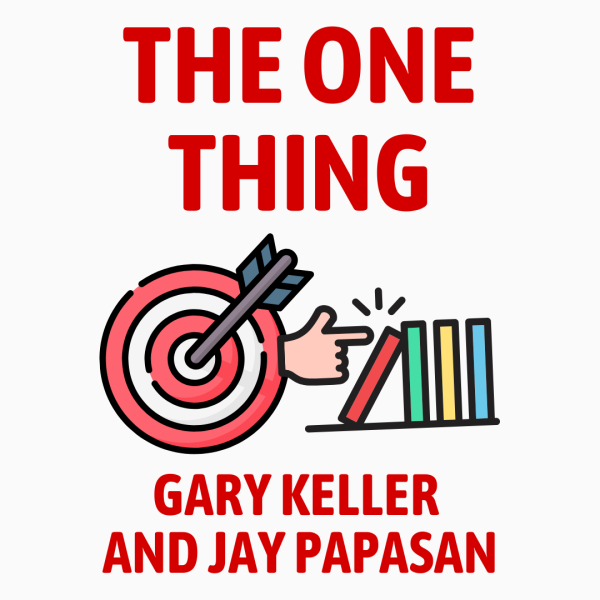










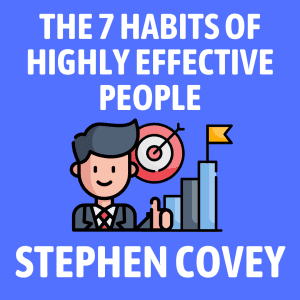

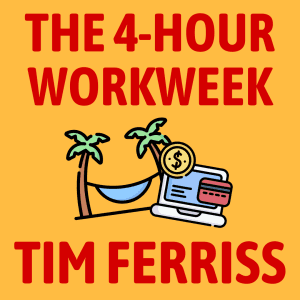

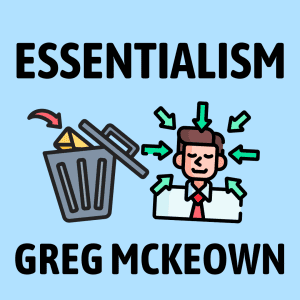
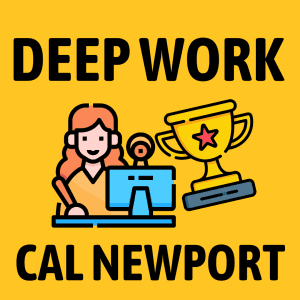


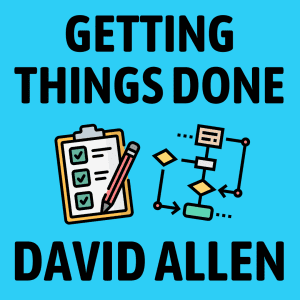
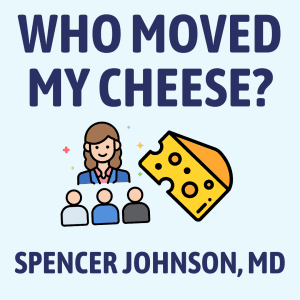


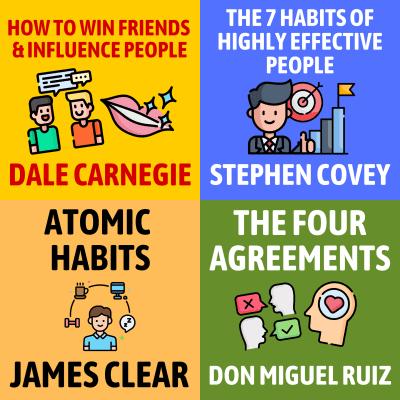
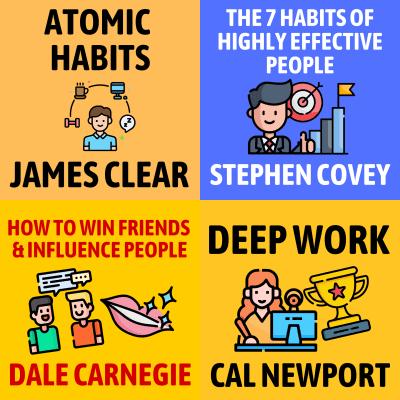

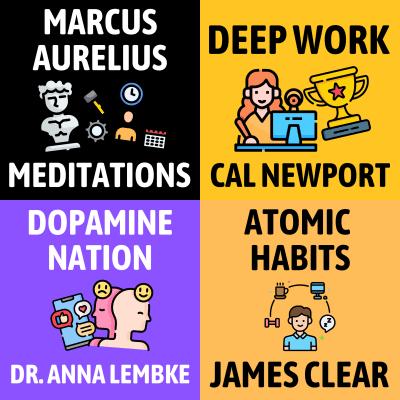

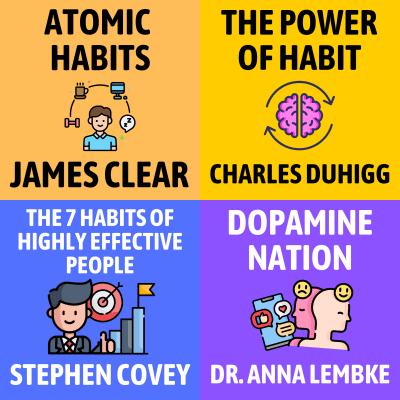

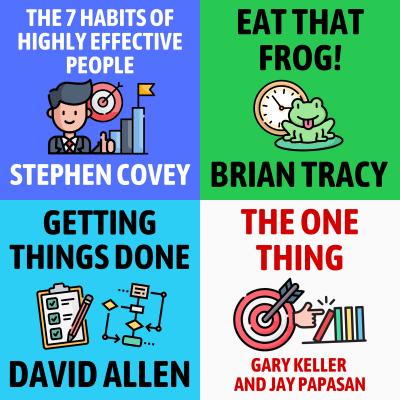
Community Notes